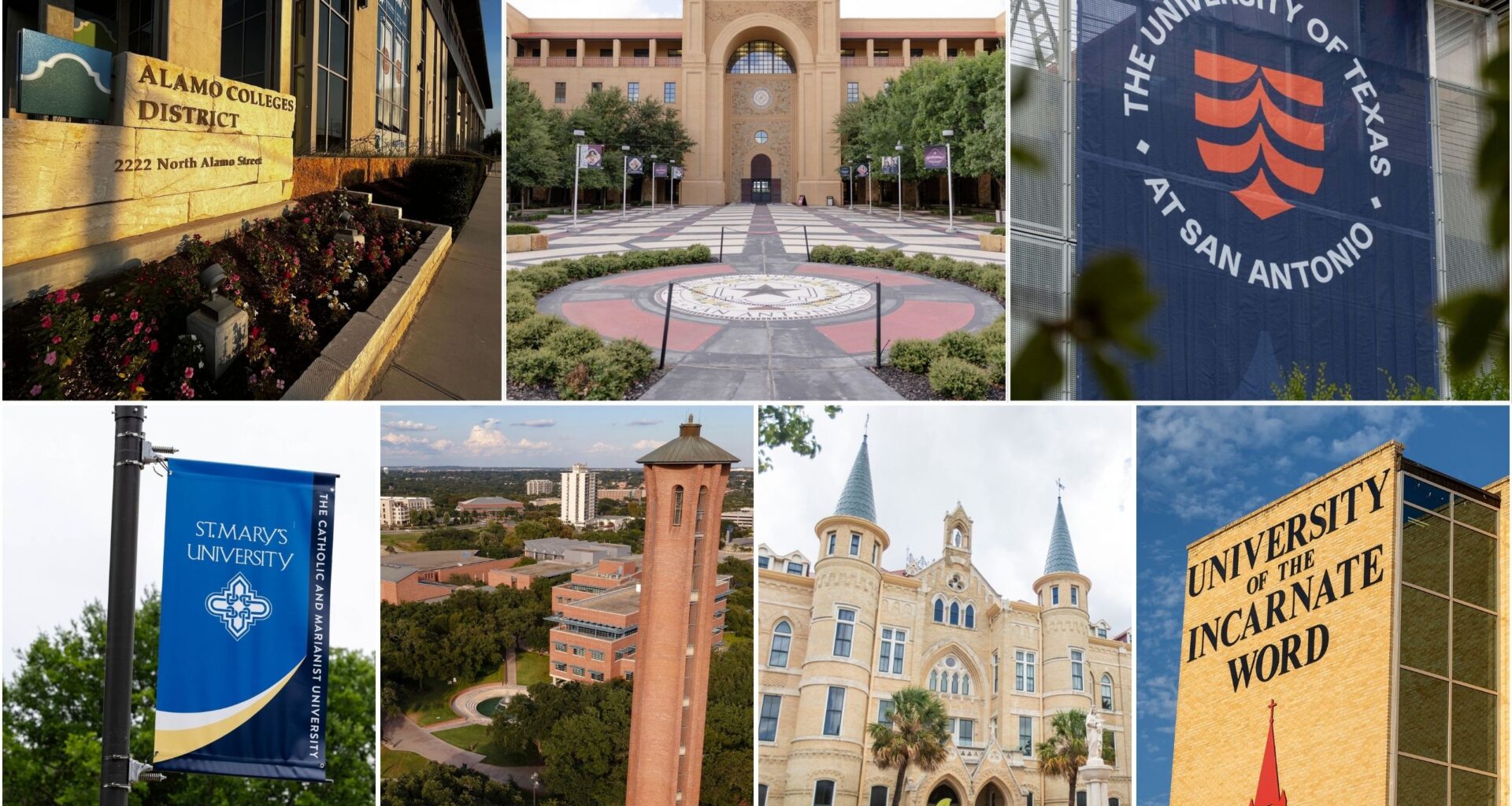Student enrollment across San Antonio’s public colleges and universities are on a steady climb, with community college growth returning to pre-pandemic levels.
But at the private universities in the city, it’s a different story.
Alamo Colleges District drove most of the region’s enrollment gains, adding nearly 9,000 students across its five colleges — San Antonio College, Palo Alto College, St. Philip’s College, Northwest Vista College and Northeast Lakeview College — matching the growth seen across U.S. community colleges since 2023.
“This record-breaking milestone reflects the trust our community and partners place in the Alamo Colleges,” said Alamo Colleges District Chancellor Mike Flores.
Alamo Colleges District officials reported reaching 87,757 students enrolled this fall.
Texas lost about 10% of community college students between 2019 and 2023, according to the Community College Research Center. Alamo Colleges was among those to lose students during the coronavirus pandemic, but since then the colleges have built momentum, gaining more than 20,000 since the fall of 2022.
More than a quarter of the colleges’ enrollment — 21,851 students — is attributed to dual credit students coming from 87 partnering school districts, charter and private schools. And more than 12,000 students attending one of the colleges for the first time are part of the Alamo Promise program, which allows them to attend tuition free.
The University of Texas at San Antonio is undergoing a unique enrollment surge, as the merger between UTSA and UT Health San Antonio became official this school year. The combined fall enrollment yielded a total of 42,457 students across UT San Antonio’s six campuses, gaining about 2,000 new students since fall 2024.
Texas A&M University San Antonio is growing at a slower pace than some officials expected. This fall enrollment is 7,983, about 70 more than last fall, falling nearly 800 students short of early goals to reach 8,750 students by this fall.
Private institutions’ headcounts have remained relatively even, as private universities are traditionally more expensive for students and more selective.
St. Mary’s University gained about 160 students since last year, landing at 3,428 head count this fall. This is not an easy feat, said Ryan Konkright, vice president for enrollment management at St. Mary’s, as they’ve worked to gain a better understanding of what families and students are looking for in a college environment to attract and retain students.
“We educate the campus faculty on what expectations (students) are going to have,” he said. “And so, we have aligned what messaging we’re giving out during the recruitment process with the experience they’re going to get when they come here and enroll. And it seems simple, but it’s a complex task to accomplish.”
Trinity University and the University of the Incarnate Word maintained a similar number of students since the fall of 2024. Trinity reported having 2,588 this fall, while UIW had 7,011.
Our Lady of the Lake University is the only one among its peers to report losing close to 200 students this fall. This is also the only institution expecting to hold the official fall headcount until October, reporting an early enrollment of about 1,800 students.
Enrollment declines led the Catholic institution to cut over a dozen programs last spring, with OLLU President Abel Chávez describing it as the aftermath of a two-year evaluation of student interest and demand.
“It all depends on what we hear from students,” Chávez said during an interview in August. “Ultimately it’s about creating an ultimate great experience where our students can be successful.”
The following graphic illustrates how this fall’s head count compares to previous years across San Antonio’s colleges and universities.
